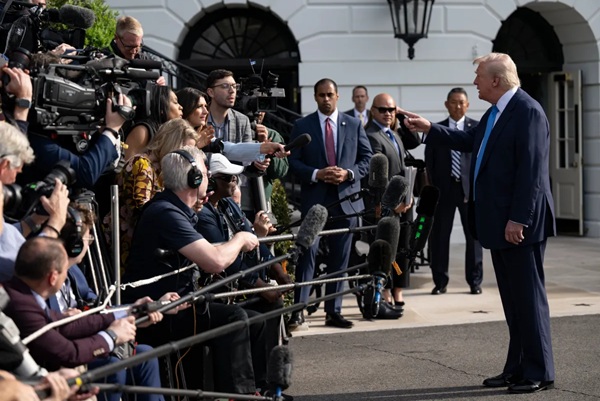.png)
India Holds Its Ground as Others Bow to US Tariff Demands
The UK, EU, Japan, Indonesia and Vietnam secured tariff relief only after making sweeping concessions — zero tariffs on US farm goods, multi-billion-dollar investment pledges and large-scale purchases of oil, gas and arms.

July 30, 2025 at 3:33 PM IST
US President Donald Trump’s confirmation of a 25% tariff and an unspecified penalty on Indian goods has been cast as a sharp escalation in trade tensions. Yet, as policy think-tank Global Trade Research Initiative points out, India may have emerged better positioned than countries that chose to strike deals with Washington.
The UK, European Union, Japan, Indonesia and Vietnam secured tariff relief only after making sweeping concessions — zero tariffs on American farm goods, multi-billion-dollar investment pledges and large-scale purchases of US oil, gas and arms. According to GTRI, these agreements tilt heavily in Washington’s favour, leaving signatories burdened with obligations that go beyond trade into strategic alignment.
India’s refusal to concede similar terms, the think tank argues, reflects a conscious defence of its core interests rather than a failure of diplomacy. Negotiations since February, including during Prime Minister Narendra Modi’s visit to Washington, were marked by deadlocks over agriculture and market access. For New Delhi, agriculture remains a non-negotiable red line: more than 700 million livelihoods depend on smallholder farming, and opening the sector to zero tariff imports from the US risked political backlash and economic dislocation.
Trump’s justification for the punitive measures: India’s high tariffs, “obnoxious” non-monetary barriers and close ties with Russia is also contested. GTRI notes that Indian tariffs are within World Trade Organization norms, non-tariff barriers are common globally, and discounted Russian oil purchases have helped New Delhi contain inflation during a period of extreme global price volatility. These factors, it argues, do not warrant punitive treatment or accusations of unfair trade practice.
Nor is India alone in facing Washington’s hard line. More than 90 countries are currently navigating similar tariff threats under Trump’s “reciprocal” trade framework, which imposed a universal 10% tariff earlier this year and allows for additional country-specific penalties. The US has linked tariff rollbacks to wide-ranging demands, from energy procurement to defence deals, often leaving partners with little room for manoeuvre.
For India, avoiding such one-sided concessions amounts to a quiet success, even as the immediate impact on exporters looms. The new tariffs could impact labour-intensive sectors such as textiles, gems, pharmaceuticals, and engineering goods, which collectively account for a significant portion of India’s $66 billion goods trade surplus with the US.
The Indian government said it was “studying the implications” of Trump’s announcement and remained committed to concluding a fair, balanced and mutually beneficial trade agreement. It stressed that “the utmost importance is attached to protecting and promoting the welfare of our farmers, entrepreneurs and MSMEs” and pledged to “take all steps necessary to secure the national interest, as has been the case with other trade agreements, including the latest Comprehensive Economic and Trade Agreement with the UK.”
India’s strategy, at least for now, appears to be one of principled patience, absorbing near term pain to preserve long term autonomy in trade policy. In a global environment where even allies are trading concessions for tariff relief, holding the line may prove a costly gamble, but one New Delhi seems prepared to make.
Also read:
‘Friend’ No More? Trump Hits India With Tariffs Over Russia, Trade Barriers
How Trump’s Tariff Tantrums Unfolded in 2025



